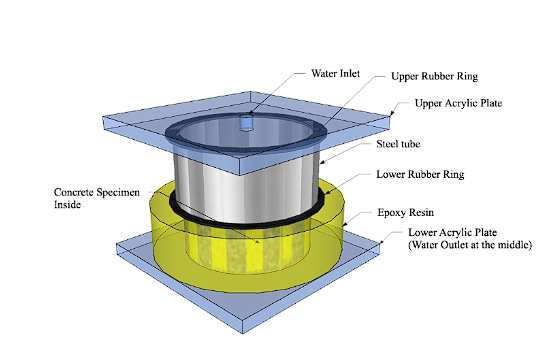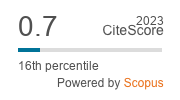Effects of Para Rubber Latex on Workability, Compressive Strength and Water Permeability of Normal Strength Concrete
doi: 10.14456/mijet.2021.9
Keywords:
Para rubber latex, compressive strength, water permeability, concreteAbstract
The objective of this research was to study the effects of para rubber latex on concrete properties even for fresh and hardened concrete namely; workability, compressive strength, and water permeability. LA-TZ, para rubber latex, was used as a partial water replacement at the rates of 0.5, 1.0, 1.5, and 2.0 percent by weight of water. The compressive strength of normal concrete was 24 MPa. The compressive strength of concrete samples was investigated at the ages of 3, 7, 14, and 28 days whereas only at the age of 28 days for water permeability test. The results showed that the para rubber latex reduced workability of fresh concrete but still in the acceptable range of design. The compressive strength increases in the mixtures containing of para rubber latex of 0.5, 1.0, and 1.5 percent by weight of water but dramatical decreases found in 2.0 mixture. The water permeability of para rubber latex concrete was related to its compressive strength, significantly. The concrete with replacement rate of 1.5 percent showed the compressive strength increase by 20 percent and the water permeability decrease by 60 percent comparing the control concrete.
References
Thailand Board of Investment, Thailand: The world’s leader in natural rubber production. Thailand Investment Review, 2016, 26(8), p. 3 – 4.
Pahusuwanno, S., Inkliang, K., and Hanhongart, B. A study of para soil cement road construction (in Thai). 11th THAICID National Symposium, Nonthaburi (Thailand), 2018, p. 265 – 276.
Bu, J., and Tian, Z.H. Relationship between pore structure and compressive strength of concrete: Experiments and statistical modeling. Sãdhanã, 2016, 14(3), p. 337 – 344.
Fajardo, G., Valdez, P., and Pacheco, J. Corrosion of steel rebar embedded in natural pozzolan based mortars exposed to chlorides. Construction and Building Materials, 2009, 23(2), p. 768 – 774.
Wang, Y., Tan, Y., Wang, Y., and Liu, C. Mechanical properties and chloride permeability of green concrete mixed with fly ash and coal gangue. Construction and Building Materials, 233, p. -.
Ahmet, R. B. and İlker, B. T. Influence of fly ash on corrosion resistance and chloride ion permeability of concrete. Construction and Building Materials, 2012, 31, p. 258 – 264.
Plangoen, P. Mechanical and physical properties of concrete modified with natural rubber latex. 5th Global Conference on Polymer and Composite Materials (PCM 2018), Kokura region, (Japan), 2018.
Palson, P., and Vidivelli, B. Mechanical properties of latex modified concrete with silica fume. International Journal of Civil Engineering and Technology, 2017, 8(9), p. 701 – 710.
Wongpa, J., and Thongsanitgarn. Effect of Para rubber latex and coir on compressive strength, water absorption and volumetric change of adobe brick. International Journal of Agricultural Technology, 2018, 14(7), p. 2229 – 2240.
ISO, Natural rubber latex concentrate – centrifuged or creamed, ammonia – preserved types – specifications. International Standard ISO 2004 fifth edition, 2010, p. 1 – 3.
ACI Committee 211. Standard practice for selecting proportions for normal, heavyweight, and mass concrete (ACI 211.1-91). American Concrete Institute, 2002.
ASTM International. ASTM C143/C143M-12: Standard test method for slump of hydraulic-cement concrete. ASTM International, 2012.
ASTM International. ASTM C31/C31M-08b: Standard practice for making and curing concrete test specimens in the field. ASTM International, 2008.
ASTM International. ASTM C39/C39M-14: Standard test method for compressive strength of cylindrical concrete specimens. ASTM International, 2014.
Wongpa, J., Kiattikomol, K., Jaturapitakkul, C., Chindaprasirt, P. Compressive strength, modulus of elasticity, and water permeability of inorganic polymer concrete. Materials and Design, 2010, 31(10), p. 4748 – 4754.

Downloads
Published
How to Cite
Issue
Section
License
Copyright (c) 2021 Mahasarakham International Journal of Engineering Technology

This work is licensed under a Creative Commons Attribution-NonCommercial-NoDerivatives 4.0 International License.







